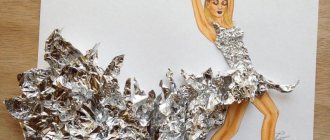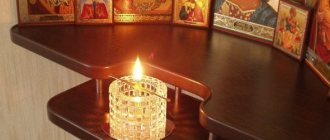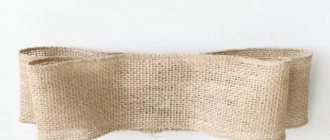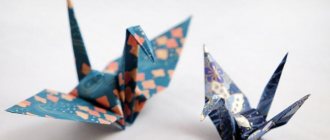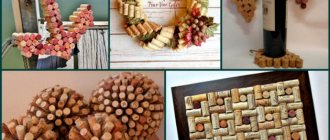Knee pads for gardening
They are made of polyethylene foam or similar material and cost from 300 to 500 rubles. These products protect the joints well; the main thing is to choose models with a thickness of at least 5-10 mm, otherwise there will be little use.
It is also worth considering that the material becomes thinner over time, so after 3-4 months of regular use you will have to buy new knee pads. If the gardener's weight exceeds 60 kg, the service life of the product may be reduced by 2-3 times. For those who rarely visit the dacha, this type of protection is best suited.
Description
But not every patient, especially at first, will be able to stand on his own and hold on. For this purpose, there is a special garter system that firmly fixes the patient. The pelvis is usually fixed so that the patient does not fall backward, as well as the stomach for greater stability. Over time, if the patient begins to feel confident in the knee support, then the strap is removed from the abdomen. You shouldn’t rush to untie the strap in the pelvic area, first loosen it slightly, and then you’ll understand it yourself as you practice. You should completely abandon the back strap only when you can stand well and confidently in the knee support. Can you tell me why I should stand? Standing in a knee support for a spinal patient is simply necessary. When standing, the functioning of all internal organs improves, the pressure gradually normalizes, and the head stops spinning and hurting, and in general, sitting in a stroller, don’t you want to stand at least a little?
Knee support picture
Also, when you get a little stronger and stand confidently, there are a number of knee support exercises that are very important if you are going to start walking and just to strengthen your muscle corset. And remember, at first you most likely won’t be able to stand for long. First start standing for 2-3 minutes, if you feel bad while standing, don’t suffer. It’s better to sit back in the stroller and rest, and when it becomes easier, stand up again. Gradually increase the time you stand. It is not recommended to stand in a knee brace for too long without moving; 30 minutes is enough for one approach; you can stand 2, 3, or 5 times a day, but not for long. Also, if you started training in a knee brace, the time can be increased to an hour.
You can also see on our website an interesting article: thoracic osteochondrosis, symptoms and treatment.
Knee support photo diagram
Knee support photo diagram
Construction knee pads
This is a cheaper, but no less high-quality way to protect your knees during gardening work. Construction overlays are quite inexpensive, ranging from 150 to 300 rubles. They can be attached to the leg with special belts, but it is much more convenient to insert the shields directly into the trouser pockets located in the knee area.
Such sections are found on pants that are intended for construction work. This nuance forces many summer residents to refuse to use such overlays. In addition, some models are not designed to work on uneven surfaces, so you need to choose carefully.
Description
But not every patient, especially at first, will be able to stand on his own and hold on. For this purpose, there is a special garter system that firmly fixes the patient. The pelvis is usually fixed so that the patient does not fall backward, as well as the stomach for greater stability. Over time, if the patient begins to feel confident in the knee support, then the strap is removed from the abdomen. You shouldn’t rush to untie the strap in the pelvic area, first loosen it slightly, and then you’ll understand it yourself as you practice. You should completely abandon the back strap only when you can stand well and confidently in the knee support. Can you tell me why I should stand? Standing in a knee support for a spinal patient is simply necessary. When standing, the functioning of all internal organs improves, the pressure gradually normalizes, and the head stops spinning and hurting, and in general, sitting in a stroller, don’t you want to stand at least a little?
Knee support picture
Also, when you get a little stronger and stand confidently, there are a number of knee support exercises that are very important if you are going to start walking and just to strengthen your muscle corset. And remember, at first you most likely won’t be able to stand for long. First start standing for 2-3 minutes, if you feel bad while standing, don’t suffer. It’s better to sit back in the stroller and rest, and when it becomes easier, stand up again. Gradually increase the time you stand. It is not recommended to stand in a knee brace for too long without moving; 30 minutes is enough for one approach; you can stand 2, 3, or 5 times a day, but not for long. Also, if you started training in a knee brace, the time can be increased to an hour.
You can also see on our website an interesting article: thoracic osteochondrosis, symptoms and treatment.
Knee support photo diagram Knee support photo diagram
Knee pads for athletes
These knee pads are divided into two types: soft and hard. The former are used by volleyball players, track and field athletes and gymnasts, while the latter are intended for cycling, skateboarding, rollerblading, etc. The first option is a softer and more flexible protection, in which it is comfortable to move and kneel. But you will have to take care of such products more carefully, because the fabric from which they are made will quickly get dirty in the garden.
The second option is a rigid structure, so walking in such knee pads is not always comfortable, but they are easier to care for. Some gardeners believe that this option is preferable to gardening and construction alternatives, as they are tougher and better protect joints. The only thing that doesn’t please me is the price of such products; the cost is in the range of 500-1500 rubles.
Bubble wrap
Bubble film is used for packaging household appliances and other fragile items, so you can get it almost free of charge, for example, when purchasing a new TV. But you can buy it, because it costs no more than 300 rubles.
To protect your knees, wrap them with film and secure the result with rope or tape. But simple wrapping is not the best option, because it will be uncomfortable for you to bend your legs. If you wrap the joints in a bent position, it will be uncomfortable to walk. Therefore, it is better to make regular knee pads from film. The main disadvantage of this option is its fragility.
Homemade knee pads from a plastic bottle
To make them more comfortable, glue a soft lining to the inside of each product. It can be sewn from thick fabric or cut from an unnecessary travel rug. This is a more energy-intensive, but economical way to make knee pads.
How to protect your knees while gardening is up to you. The main thing is to choose an option that suits you not only in cost, but also in quality.
Source
Requirements for a cone splitter
The design of the screw splitter should ensure not only high reliability and performance, but also safety during operation. Therefore, when choosing the design of the unit and its manufacture, it is important to adhere to the requirements for equipment of this type and the recommendations of the craftsmen who have tested the machine in action.
Flexible transmission is a simple and affordable way to change the speed of rotation of the propeller when using high-speed electric motors
To obtain a mobile design, an internal combustion engine is used to drive the machine
Construction knee pads
In the construction industry, knee pads are needed for tiling (especially if you have very large volumes).
They protect the knee from hypothermia and reduce the load on it.
Of course, you don’t have to worry about sewing knee pads yourself and just buy ready-made ones, but... many purchased knee pads have a drawback - a plastic insert in the center (numbers 1, 2 in the picture).
Such inserts are extremely unstable supports, and in addition they raise the knee (due to the thickness of the insert) and this makes it impossible to stay on the floor for a long time (the legs get tired from constant balancing).
There is an option without plastic inserts (number 3 in the picture), made of rubber (or caoutchouc). Yes, this option is more convenient, but... it does not heat and lets in the cold from the tiles.
So, it turns out that there are no comfortable and protective purchased knee pads (with rare exceptions). How to be? – Purchased knee pads can be upgraded to make them more comfortable.
Modernization of knee pads with plastic insert
Option 1
The easiest way to upgrade knee pads is the first type (number 1) since it is fixed with Velcro.
Option 2
Video about upgrading knee pads
DIY knee pads for gardening
If you need an option for the garden, then you can simply make your own knee pads (rather than buy and upgrade them).
Good knee pads help you work in beds and flower beds (when you cultivate the soil or plant seeds).
With their help, it is much more convenient (and better for health) to work on cold, wet ground, with or without stones. Such knee pads can also be used for winter fishing (but with a stronger emphasis on heat protection).
Of course, if you need “pseudo knee pads” for once or twice, then you can simply take pieces of foam and place them under your knees.
Most often, knee pads are made using travel mats (several layers are glued or stitched, and fasteners are secured between the layers).
If you need knee pads with a “comfort” function, that is, to be able to stand softly on the ground even with pebbles, knee pads made from travel mats are just right.
But if you want the knee pads to better support the “warmth” function, that is, if you are preparing them for work in the spring, when the ground is still damp and cold, then the second option:
Sequencing:
DIY knee pads for children
For children's knee pads, the main function is protection. After all, a child often falls not only on the ground, but also on the asphalt.
How to protect the child in this case? Many people simply dress the child as best they can - jeans, leggings, and so on, but in the summer this is not very good, and there is no convenience.
You can make protective knee pads from... ordinary socks (not children's), you can't even always say that they were really socks (if you choose socks with a large pattern, you get the impression that these are special purchased knee pads).
To do this, you need to purchase 2 pairs of socks (necessarily with elastic bands).
Then we cut it as shown in the drawing (1 pair to the heel, cut off only 2-3 centimeters from the second with an elastic band).
After this, we sew these two parts together (it is advisable to turn the edges together).
As a result, we get knee pads with two elastic bands (one at the top, the other sewn at the bottom).
If this does not suit you, you can additionally make “pockets” at knee level with felt, cotton wool or any other softening material.
In general, what and how to make knee pads from must first of all be based on the functions that they should perform: this can be protection from hard soil or asphalt (as in the case of children’s knee pads), or construction knee pads, and heat protection for working in unheated conditions. land (and for winter fishing).
The level of safety and choice of materials also depends on you, we only provide you with ideas.
Source
bull, We sew a functional and fashionable accessory ourselves
Even if you are not a needlewoman, sewing knee pads for children yourself will not be difficult for you. It's really simple!
All you need are socks. The most ordinary, and maybe even worn, socks that have served their purpose, so to speak! More precisely, you only need their upper part. You may not even need a sewing machine; having one is not at all necessary, since you can hem such a simple thing by hand. So, let's get started?
STEP ONE. To begin, choose a pair of socks with a thick enough elastic band so that knee pads for small children fit well on the leg, but do not squeeze the baby’s skin. Now take the scissors and cut off the bottom of the socks, leaving the heel in the center of the knee pad. The part will be curved in accordance with the so-called anatomical bend of the baby’s leg.
STEP TWO. Actually, this is the last one, since all you have to do is finish the cut edges with a hidden seam from the inside out. However, this clause is unimportant; it all depends on your imagination. You can finish the edge by stitching the outside with beautiful bright threads or sewing an elastic band from another pair of socks onto it, as you wish.
Actually, that’s all - the knee pads for crawling are ready. Elastic and soft elastic bands do not squeeze children’s delicate skin, ensuring a strong fixation of the product on the legs. The protective part is somewhat compacted, especially if the heel of the socks had some kind of pattern, but if not, you can compact it yourself.
STEP THREE. For particularly active children, as well as for those who have not yet fully mastered walking skills, it is advisable to make knee pads with additional tabs. In this case, nothing will happen to the delicate skin on the little one’s knees, and the pain when falling will no longer be so severe.
To make your own knee pads for small children with tabs, you need to sew something like a pocket from the inside, placing in it, for example, cotton wool, a piece of foam rubber, or simply unnecessary remnants of a sock. The tighter the tab, the less hassle mom has!
STEP FOUR. If you failed to guess the tightness of the elastic band and the edge is too loose, or your baby is so active that the knee pads for crawling keep slipping and do not fit tightly on the child’s leg, you can insert additional elastic. It’s even easier and more reliable to sew a nice button onto tights or overalls, 3-5 centimeters above the knee, and make a slot in the knee pad for the button and overcast it. This way you will not only fix the knee pads in the right place, but also add originality and fashion to your baby’s wardrobe.
STEP FIVE. However, such simple yet extremely functional knee pads are more suitable for home use. Of course, you can buy children’s knee pads for walks by choosing some interesting pattern or knitting, but you can also sew more original and unusual accessories yourself.
Here you need to take into account the gender of small children. Boys will be interested in wearing children's knee pads with applications, for example, in the form of a soccer ball, cars, stars, and girls will probably like images of flowers or their favorite dolls. Making appliqués is also not difficult; you can cut them out of some things that are too small for the child and simply sew them on; you can buy them in special handicraft stores, or you can embroider them yourself. In this case, your baby will definitely be the most fashionable on the entire playground!
STEP SIX. Handicraft mothers who know how to knit or crochet can knit warm knee pads for their children, and even with an intricate pattern.
If you don't know how to knit, it doesn't matter. For the winter, you can make warm knee pads from unnecessary knitted items such as a sweater, syndepon overalls, etc. It is enough to simply cut off, say, the sleeves from a warm jacket, hem the seal if necessary, and process their edges.
Such accessories will protect children's delicate knees from damage, and will also warm the baby in cold weather. In just a little time, your child will stop falling so often. During this time, you will get the hang of it and by the time your baby gets on roller skates, skates or sits on a bicycle, you will have learned how to make real masterpieces of safety accessories!
Content
The winter season is just around the corner, therefore, having noticed an inexpensive foam mat in a beautiful gray color in the store, I decided to buy and finally make myself knee pads, which I have been wanting to make for several seasons now, and at the same time share the “secret” of making it with you . Such knee pads are suitable both for winter fishing and for use at home, where you need to stand on your knees for a long time. The idea is not new. Similar knee pads are available both in mass production and non-serial production. I picked up nuances both here and there, and added something of my own.
So, from words to action!
What you will need
We will need: an elastic tape with a width of 25-30 mm, a total length of about 1.5 meters, fastex fasteners for the corresponding tape, rubber glue, a “tourist mat” and auxiliary tools in the form of scissors, a knife, a ruler and other little things.
Step-by-step manufacturing process
First we need to mark our mat into rectangles measuring about 200x300 mm, with 5-6 layers per knee pad. Then cut according to the markings.
We measure the elastic tape to the circumference of the leg and cut 4 strips with a margin of 20 mm for seams + 50 mm for gluing. The location of the segments on the knee pad can be seen in the photo below. The tape must be positioned so that the fasteners are on the outside of the leg and do not fall under the knee, this is important!
Next, we will need a cylindrical object with an approximate diameter of 120 mm. The most suitable cylinder I had was a piece of pipe after laying a sewer system, D-110mm.
Before gluing, we lightly “pass” each rectangle with sandpaper with a grit of about 100 and apply glue to the surfaces to be glued, according to the instructions for the glue. I used the regular "Moment". Then we apply and press one rectangle from the backing with glue onto the cylinder to give it a rounded shape, and carefully glue the second rectangle so that both rectangles being glued take on a rounded shape. It is more convenient to do this from the center to the edges. The result should be such a “semicircle”!
Then we fix the resulting semicircle to our cylinder with stretch film until the glue dries completely.
While the glue is drying, you can glue in the elastic band! In one of our rectangles we make through cuts along the edges, two cuts on the left and two on the right. We pass an elastic tape through them and glue them on the back side with the same glue! We also leave to dry. Please note that on the outside of the leg the pieces of tape are very short. This way the fastener will never get under your knee!
While we were dealing with the tapes, our semi-finished product under the stretch film had just dried out. We remove the film and remove our knee pad.
We perform this operation with all the rectangles, gluing each of them on top of the previous one. In total, I used 5 layers of foam for one knee pad. Foam thickness 8 mm.
When all the layers are glued, all that remains is to glue the rectangle with the glued tapes onto the inner surface of the future knee pad. At this stage, fixation with stretch film is no longer needed, the knee pad holds its shape on its own! Carefully glue the last stand and wait for the glue to dry. It seemed to me that all the layers of the gray rug were not enough, and some of them were too soft, so I cut up another travel rug I had, made of a denser material, and glued another layer. This is what our knee pads look like completely glued together.
All that remains is to carefully cut off the corners with a utility knife and give the knee pads a slightly rounded shape so that the fishing line and other things do not catch during use.
This can be done using sandpaper or by hand, using the same stationery or shoe knife, as well as regular sandpaper. I have good sandpaper, so I don’t bother with this issue; unfortunately, I couldn’t take a photo of the process, because... both hands were busy) and everyone knows what the grinding process looks like on an abrasive wheel)
Now you need to insert the Fastex fasteners into the elastic bands. The “fork” of the fastener has two frames and the ability to adjust the length of the tape. We pass a ribbon through the frame, and the ribbon self-clamps, and the mating part of the fastener is sewn on.
Digging a well
They dug the well together - ani1883 selected the soil from the inside, and the son pulled out the filled buckets using a synthetic rope, 14 mm thick, on which knots were tied every 0.5 m for convenience. As the main tool I used a short shovel with a curved metal handle. The first couple of meters was loam, followed by mixed clay, after another one and a half meters there was dense black clay. The thickness of this waterproof layer turned out to be a little more than a meter, after which the soil became lighter, sand appeared and water began to ooze out. The depth of the well by that time was almost six rings (the outermost one was 50 cm above ground level), and then the “fun” began.
ani1883FORUMHOUSE Member
Every third bucket of water. I had to work at the tempo of rock and roll, without smoking breaks or stops. It took 3.5 hours to lower these half a meter. Then they leveled, cleaned the bottom of the well and, tired but undefeated, emerged into the light of day. It is optimal, of course, to dig a well with three people.
The void between the walls of the well and the ground was filled with sand, the well was closed with a concrete ring with a hole for the lid, and a plastic cover was installed.
How to make knee pads at home. How to make your own knee pads for the garden
Knee pads for working in the garden can be made from various materials. There are many options for disposable and reusable knee pads. Making disposable devices with your own hands takes only 5-10 minutes.
You can use pieces of foam simply by tying them to your knees. But this option is not the most convenient, since this accessory will be needed every day, and polystyrene foam is a very brittle material.
Therefore, it is much better to sew good reusable knee pads with your own hands. It's quite simple, the main thing is to follow the recommendations exactly.
How to make knee pads for the garden. How to make knee pads with your own hands for the garden, photos and videos
Knee pads are a very useful and popular item. This accessory is used by athletes, builders and dancers. Knee pads can also be very useful for gardeners. And although they are all very similar to each other, they still have some differences.
For example, knee pads for athletes are designed to protect the knee joint from bruises and scratches, dancers need reliable support, and summer residents need softness and warmth. Therefore, it will be very difficult to buy a suitable model, especially since you can make them yourself much faster and cheaper. Such an accessory will meet all the requirements and will definitely fit the owner.
Knee pads for the dacha and garden are designed to make work in the garden beds easier - weeding, sowing seeds, loosening. Since such work requires standing all the time, bending over or squatting. Such positions are very uncomfortable, and are often contraindicated for older people. Knee pads for the garden must meet the following requirements:
How to make your own knee pads for the garden
Knee pads for working in the garden can be made from various materials. There are many options for disposable and reusable knee pads. Making disposable devices with your own hands takes only 5-10 minutes.
You can use pieces of foam simply by tying them to your knees. But this option is not the most convenient, since this accessory will be needed every day, and polystyrene foam is a very brittle material.
Therefore, it is much better to sew good reusable knee pads with your own hands. It's quite simple, the main thing is to follow the recommendations exactly.
You can make good knee pads with your own hands from travel rugs. They do not allow cold and water to pass through. To do this, you need to cut out an oval-shaped pattern from cardboard. Then, according to the pattern, 5-6 blanks from the tourist rug are cut out. The blanks are glued together using superglue or stitched. In the middle between the layers, fastenings from belts are inserted.
Restoring the function of standing on two legs
The first level of compensation for the function of standing on two legs is characterized by the absence of independent standing and locking of the knee joints in a vertical position, as well as a significant decrease in the holding work of the corset. The patient can stand on two legs only if there is external fixation of the joints of the lower extremities and spine, holding the support with his hands.
An earlier transfer of the patient to a vertical position is desirable for many reasons: this is the normalization of autonomic reactions, the prevention of osteoporosis of the bones of the lower extremities, and the improvement of drainage of the urinary system, and increased intestinal motility. Adequate stimulation of the vestibular analyzer and, consequently, activation of the descending vestibulospinal tracts is of fundamental importance. In addition, the vertical position of the patient’s torso significantly expands the arsenal of the kinesiotherapist and facilitates his work.
At the first level of standing compensation, the strength of the corset muscles corresponds to 2 points, so strengthening them is the main goal of kinesitherapy at this stage. At the same time, the support of the lower extremities should be restored by forming and activating synergies that ensure closure of the knee joints.
Restoring statics in the legs at the first level of compensation is carried out in several stages:
Rice. 9. Knee support (front view), mounted in the form of a gate on parallel bars
When learning to stand, a standard mistake encountered is weak fixation of the hip and knee joints, as a result of which the legs bend at the knees, and the patient sits more on the upper strap than stands. The instructor must ensure that the patient always stands on straight legs.
Rice. 10. When the patient stands in a knee support, his pelvis is held by a strap, his knees rest against the “gate”, and his ankle joints are fixed with a belt
Rice. 11. Training in standing in a knee support with an open “gate” using rubber rods acting on the knee joints in the front-to-back direction
According to indications, lockless devices are used to facilitate the correct installation of the leg. The use of one or another device is dictated by the specific situation, depending on the initial muscle tone and the range of movements in the joints of the legs.
It is very important to teach the patient to stand up correctly. Almost all patients with deep paraparesis experience spinal ataxia syndrome, that is, the collapse of the optimal biomechanical structure of a motor skill caused by severe damage to the afferent and efferent systems.
Rice. 12. Stabilization of the knee joint while standing with a rubber band
Ataxia in spinal spastic paraparesis manifests itself very typically. The patient, doing push-ups on his hands, tries to stand up without loading his legs, that is, he hangs with emphasis on his hands. Then, by rocking the body, he tries to straighten his legs and close the knee joints, but since the legs are not loaded, the extension support reflex does not occur and the knee joints are not fixed, standing is not possible.
Restoring the normal pattern of standing begins with the formation of support in the legs. First, the patient learns to load his legs: from the initial sitting position, holding parallel bars with his hands, he makes a deep bend forward, while the pelvis rises back and up (the movement is similar to diving), the legs are loaded, the distal ends of the femurs move posteriorly, the knee joints are recurved and close, then the body unbends. When extending the torso, the pelvis can move forward excessively, dragging with it the projection of the general center of mass, which is in front of the hip joints, which can cause them to open.
Rice. 13. Triangular foot rests make it easier to lock the knee joints
Initially, in order to check the form of the motor response, test electrical stimulation is carried out with single pulses lasting from 10 to 100 ms, then stimulation is applied with a series of pulses of a selected duration with a frequency of 20-30 Hz for 1-2 seconds. If the form of the response is adequate, then an electrical stimulation session is carried out with the patient standing in a knee support or in an orthotable. When the signal is given, the patient tries to facilitate the muscle contractions caused by volitional efforts. The procedure lasts 20-30 minutes with 3-5 minute breaks for rest.
All these clinical subgroups belong to the second level of compensation for standing function. For the majority of patients in the first subgroup, this level of compensation is final, since it is very difficult to improve the way of standing using only synergies with a minimum of voluntary movements.
For patients from the second subgroup, the second level of standing compensation is transitive. As a rule, they progress quickly, increasing muscle strength.
The third subgroup is represented by disabled people who, having learned to walk on crutches and having achieved minimal adaptation, do not want to further improve their motor skills; as a rule, they have a long history of injury and already established habits. In these people, the amount of muscle strength in the legs is often even greater than is necessary for the second level of compensation. It is very difficult to convince such patients of the need for further motor improvement; if this fails, then general strengthening exercises are prescribed.
Each subgroup has its own specific kinesitherapy program. Patients who have learned to stand and walk due to synergies, in the absence of further dynamics of functional restoration, should be professionally reoriented and employed. Kinesitherapy for them has a strengthening and supportive focus. Its main task is to support the achieved level of compensation through daily independent physical therapy exercises against the background of periodic sanatorium-resort treatment.
According to indications, during exercises on the octagonal plane, the orthostatic reflex can be stimulated.
A characteristic feature of the standing of patients with the third level of compensation is the ability to stand without support from their hands. The patient stands up with support, but can also stand without it, balancing with his hands to maintain balance. Progress in standing function within the third level of compensation is associated with the development of muscle strength in the knee extensors (quadriceps) and plantar flexors of the foot (calf muscles). Often these patients have disproportionate development of the quadriceps femoral muscles with a decrease in muscle strength in other muscle groups. They cannot stand steadily with full straightening of the lower limbs and stand on half-bent legs. When drawing up a kinesitherapy program, you should pay attention to the imbalance of muscle strength between the flexors and extensors in the legs and exclude any exercises to increase the strength of the quadriceps muscles. To correct imbalances, analytical methods of therapeutic exercises are used. The focus is on activating the gluteus maximus and ischiocrural muscles, as well as the dorsal flexors of the foot. Classes on a swinging plane are carried out while standing on straight legs.
The lack of effect of conservative measures to restore foot movements in the ankle joints, as well as the presence of defective installations in them (equinovarus contracture) serves as an indication for orthopedic surgical intervention.
Source
How to sew knee pads for the garden. How to make knee pads
Knee pads are a useful thing that can be useful to everyone: motorcyclists, skateboarders, roller skaters, football players and even the most ordinary summer residents. Everything is clear about professional athletes: they always use branded knee pads from the best manufacturers. But what about amateur boys whose pocket money is tight, or summer residents who don’t need to buy “cool” products for weeding their garden? There is a cheap and easy solution: knee pads made from... plastic bottles!
The advantages of this method are obvious: there is no need to spend a lot of money on buying “real” knee pads, there is no need to invent extravagant ways of sewing these necessary parts from leather, leatherette and stuffing this “skin” with some kind of rubbish “for softness”. And, in addition, plastic knee pads are an almost weightless thing that takes up very little space, so you can take it with you anywhere.
Cut a rectangle from the bottle - a shield to protect the knee joints. You can make it larger or smaller, depending on your personal comfort and, of course, physical parameters. The optimal dimensions are 15 centimeters up and 15 centimeters down, if you count from the kneecap itself. Thanks to this “pattern”, the knee pad will not interfere with the work of muscles and joints, will not restrict movements and will not painfully cut into the skin.
Carefully place a soft cloth on the inside of the plastic shields. To prevent it from “driving” inside and constantly flying out, it is better to glue it to the plastic with glue.
Holes are made on the sides of each plastic part with an awl or a large pin - two for each shield.
Pattern of knee pads. Making knee pads for winter fishing
For winter fishing, fishermen need additional equipment: tackle, hooks, fishing rods and special items of clothing in which a person can go hunting. Knee pads for winter fishing are a useful piece of equipment.
Today they are sold in most specialty stores. If a fisherman has a small amount of time and does not want to waste money, then it is not difficult to build a pair of comfortable winter knee pads for fishing with your own hands.
Equipment for winter fishing
Every experienced angler knows how much the process differs from what is usual at other times of the year. And it's not just about weather conditions. Fishing rods, fishing line, clothes and equipment - winter makes its own adjustments to everything. You will even need a tent in cold weather.
Advantages and disadvantages of fishing from the knees
If, after weighing all the advantages and disadvantages, the fisherman concludes that fishing from the knees is still for him, it is worth considering the possibility of creating knee pads with your own hands.
How to make knee pads for ice fishing with your own hands
Often manufacturing companies make products from non-waterproof materials. Therefore, many fishermen make their own knee pads.
Patterns
Before making knee pads for winter fishing, you should decide how much material you will need. You need to make a kind of pattern for the knee pad.
To do this, it is recommended to use a measuring tape to measure the parameters of the knee completely, then separately in width and height those areas that should be covered with knee pads.
The material will have to be folded several times, so you need to multiply the width of the knee by 3 so as not to cut off too small a piece. After measuring the parameters, you can draw a sample of the knee pad on a piece of cardboard and use the pattern as a template for cutting out the insulation.
Materials and tools
Materials you will need:
Manufacturing process
Pipe insulation is often sold rolled up, so it must first be flattened. To do this, the material is spread over the entire area, a heavy object is placed on top as a press and left in this form for several days.
The insulation will level out literally within 2 days and will no longer curl. If it is not possible to store the thermal insulation material unfolded, then to straighten it you can simply twist it inside out with a tube.
Having prepared the insulation, the piece needed for the knee pad is cut out of it. This is easy to do using a pattern or by eye. Then the canvas is folded 3 times. If desired, foil is placed between the layers of insulation for thermal insulation and protection from ice. Another layer of foil is placed over the surface of the product.
The next stage is the manufacture of a case into which the workpiece is placed. It is necessary to sew the cover so that the insulation fits tightly into it. A pattern with dimensions will again help with this. However, it is worth additionally taking into account the width of the insulating material.
Having inserted the foil and insulation into the cover, stitch them from the knee side to secure the fabric. You should act carefully so as not to further damage the surface of the knee pad.
For convenience, a wide elastic band is sewn to the knee pads. It will hold the equipment tightly in place without squeezing the leg. For this purpose, electrical tape or reinforced tape is used, but a simple rubber band is most convenient to use.
If you decide to use reinforced tape, do not forget about Velcro. They need to be sewn on before the insulation is inserted. It will be difficult to do this later.
This concludes the production of knee pads. Each angler can add features to the design, improving the equipment depending on their needs.
Monolithic well with reinforced concrete knife: knife device
Among supporters of well water supply, not everyone likes ready-made concrete rings. An alternative is a monolith, which is gradually poured into the formwork as the shaft deepens. This method was chosen by a member of our portal with the nickname Benderoid. But he preferred a reinforced concrete “knife”, not a concrete one, the width of the “blade” was 70 mm. To fill the knife I used a ready-made M300 DSP.





